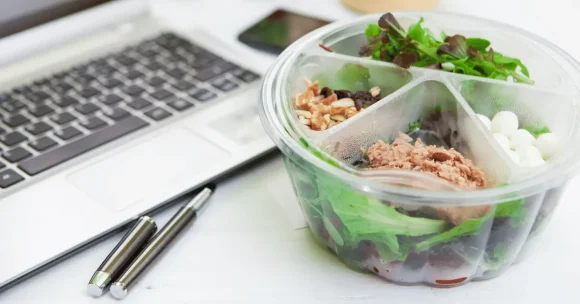While office workers are begrudgingly returning to brick-and-mortar workspaces, the catering industry is in a state of revival. With social gatherings and boardroom meetings now resuming in person, catering is expected to return to its pre-COVID-19 success.
The latest data from Expert Market Research shows that the catering sector is seeing double-digit growth, fueled by in-office collaborations and private events. The US catering market’s value is projected to hit over $124 billion by 2032.
Catering’s resurgence
The industry is set up for success as companies are now using food to lure employees back to the office. Caterers also had to adapt to the hybrid work model, with most companies favoring Tuesday and Thursday as in-office work days.
A number of restaurants plan to introduce catering services this year, anticipating the market’s growth at a CAGR (compound annual growth rate) of 6.2% over the next eight years.
Restaurant Dive reports that in addition to in-office catering services, many suppliers are also offering boxed lunches and a variety of personalized dishes to reach more customers.
Catering budget trends
These new workplace trends make it easier for catering companies to adjust and remain profitable. While individual dining continues to decrease as consumers struggle to make ends meet, business catering is set to soar.
ALSO READ: Reserve Bank of Australia leaves interest rates on hold
Speaking to Restaurant Dive, Wings & Rings’ field marketing manager, Dan Sweatt, says, “catering orders are huge because it’s money that you’re going to make ahead of time.” He says preorders are great, too. “The more you can generate, the more revenue you know is coming in.”
As companies increasingly recognize the value of food as a tool for employee engagement, the role of catering becomes increasingly apparent. However, is food enough to stem the work-from-home tide?
Lunch as leverage
When businesses first started talking about a return to office, Dr. Gleb Tsipursky, referred to as the ‘office whisperer’ by The New York Times, interviewed Said Elkhodary, SVP Professional Dining at Elior North America, to talk about the lure of free food.
While sharing food can foster a greater sense of community, on its own, it might not be enough to get employees back at their desks. Tsipursky explains: “Rather than a free lunch enticing employees back, the expectation of holistic amenities, including flexibility to work from home, prevails.”
While the idea of a free lunch seems promising, employees say flexibility still trumps free food. Julia Hobsbawm, author of ‘The Nowhere Office: Reinventing Work and the Workplace of the Future,’ says the focus will shift from the hybrid model to flexibility over the coming years.
Hobsbawm says that is why so many professionals are turning to freelancing. “They are finding in freelancing what they really desire for their careers: greater flexibility, autonomy, and earning power.”
About the author
Cheryl has contributed to various international publications, with a fervor for data and technology. She explores the intersection of emerging tech trends with logistics, focusing on how digital innovations are reshaping industries on a global scale. When she's not dissecting the latest developments in AI-driven innovation and digital solutions, Cheryl can be found gaming, kickboxing, or navigating the novel niches of consumer gadgetry.











